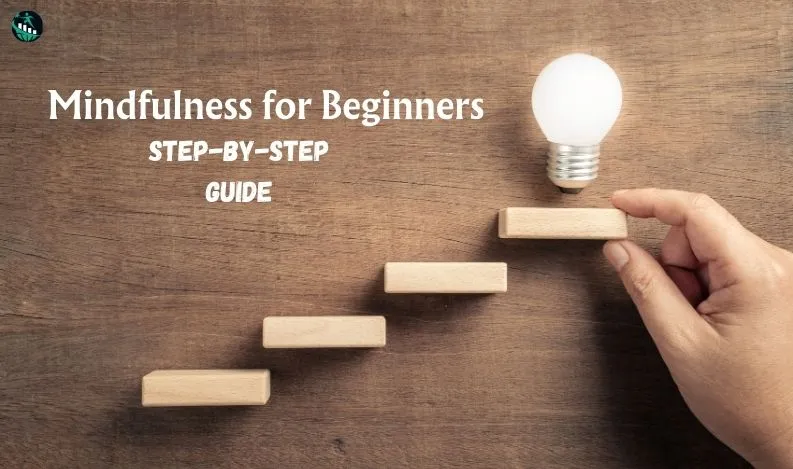
Mindfulness for Beginners: A Step-by-Step Guide
In a world bustling with distractions and stress, mindfulness emerges as a beacon of calm and clarity. This ancient practice, rooted in Buddhist meditation but universally applicable, offers a profound way to navigate life's challenges with grace. Here, we present an in-depth guide to starting your mindfulness journey.
Understanding Mindfulness
Mindfulness is the art of being fully present and engaged with the here and now, without judgment. It's about noticing the world around you, your thoughts, feelings, and sensations, and accepting them with openness and curiosity.
The Science Behind Mindfulness
Research in the fields of psychology and neuroscience has illuminated the numerous benefits of mindfulness, including reduced stress, enhanced emotional regulation, improved concentration, and a greater overall sense of well-being. Studies suggest that mindfulness practices can physically alter the brain, strengthening areas associated with positive attributes like empathy and resilience while diminishing those linked to negative emotions.
Embarking on Your Mindfulness Journey
Embarking on this journey requires no special equipment or background—just an open heart and mind.
Step 1: Cultivate an Attitude of Non-Judgment
Begin by fostering a non-judgmental stance towards your thoughts and feelings. Recognize that mindfulness isn't about emptying the mind or achieving a state of eternal calm, but rather observing without criticism.
Step 2: Find Your Practice
Mindfulness can be practiced in myriad ways, from formal sitting meditations to mindful walking. Experiment to find what resonates with you.
Deepening Your Mindfulness Practice
Daily Mindfulness Exercises
A. Mindful Breathing
Dedicate five to ten minutes each day to focus solely on your breath. Sit in a comfortable position, close your eyes, and simply observe the sensation of breathing. This practice anchors you in the present and can be a calming refuge anytime.
B. Sensory Immersion
Take a routine activity, like washing dishes or showering, and focus intently on the sensory experiences involved. Notice the water's temperature, the soap's scent, the sound of dishes clinking. This exercise turns mundane tasks into moments of mindfulness.
Advanced Mindfulness Techniques
Loving-Kindness Meditation
This practice involves mentally sending goodwill, kindness, and warmth towards others and yourself. It can foster a sense of interconnectedness and compassion.
Mindful Eating
Mindful eating is about using meals as an opportunity to connect to the experience of eating, noticing the colors, textures, flavors, and smells of your food, and listening to your body's hunger and fullness cues.
Incorporating Mindfulness into Everyday Life
Mindfulness doesn't have to be confined to meditation. It can be woven into the fabric of daily life with a little intention.
In Relationships
Practicing mindfulness in conversations means listening fully without formulating your response while the other person is speaking. It fosters deeper connections and understanding.
At Work
Use mindfulness to manage workplace stress. Begin meetings with a minute of silence, or use the breath as a tool to center yourself before a presentation.
For Health
Mindfulness has been shown to improve physical health by lowering blood pressure, reducing chronic pain, and alleviating gastrointestinal difficulties.
Mindfulness for Mental Health
Mindfulness is a powerful tool for mental health, helping to manage anxiety, depression, and stress by breaking the cycle of negative thought patterns.
Tips for Mindful Mental Health
Acknowledge and Observe: Notice and accept your feelings and thoughts without judgment.
Stay in the Present: Gently guide your attention back to the present moment when you find your mind wandering to the past or future worries.
Challenges and Solutions
Common Obstacles
Distraction and impatience are common. Remember, mindfulness is a practice, and like any skill, it takes time to develop.
Overcoming Resistance
Set small, achievable goals and gradually increase your practice time. Celebrate your successes along the way, no matter how small.
Resources for Further Exploration
Apps: Explore mindfulness apps like "Insight Timer," "Calm," or "Headspace" for guided meditations.
Books: "The Miracle of Mindfulness" by Thich Nhat Hanh, and "Mindfulness in Plain English" by Henepola Gunaratana offer insightful introductions.
Courses: Look for local or online mindfulness courses or workshops to deepen your practice.
Conclusion
Mindfulness offers a path to rediscovering the richness of every moment. By cultivating awareness and compassion, we can navigate life's ups and downs with greater ease and open ourselves tothe essence of living more mindfully and authentically in the modern world.
As you embark on or continue your mindfulness journey, remember it's a personal and unique path. There's no "right" way to practice mindfulness; what matters most is your commitment to present-moment awareness and the compassion you bring to yourself and others in the process. By integrating mindfulness into your daily life, you open the door to a more connected, peaceful, and fulfilling existence.
Mindfulness is more than a practice—it's a way of living. By choosing mindfulness, you choose to live in the present, to appreciate the now, and to foster a deeper understanding of yourself and the world around you. It's a journey of discovery, one that offers profound rewards for those who embark on it with an open heart and mind.
Also Read:-



Recent Comments: